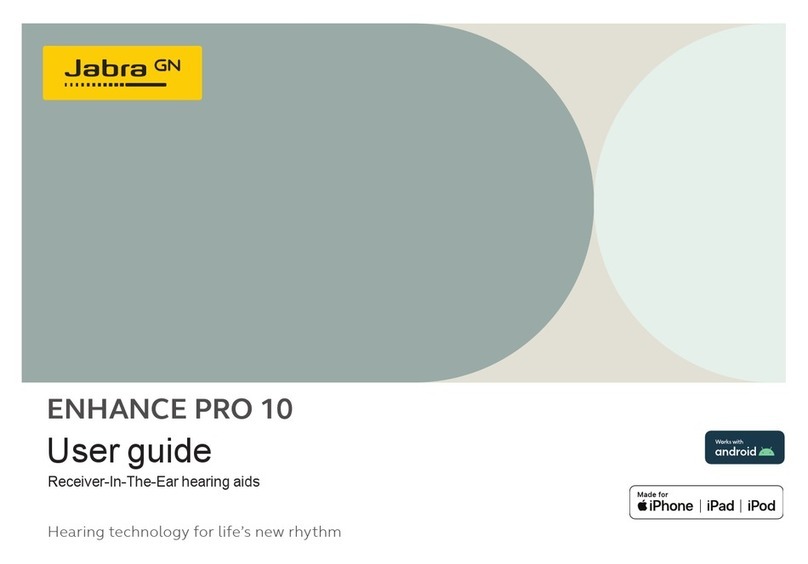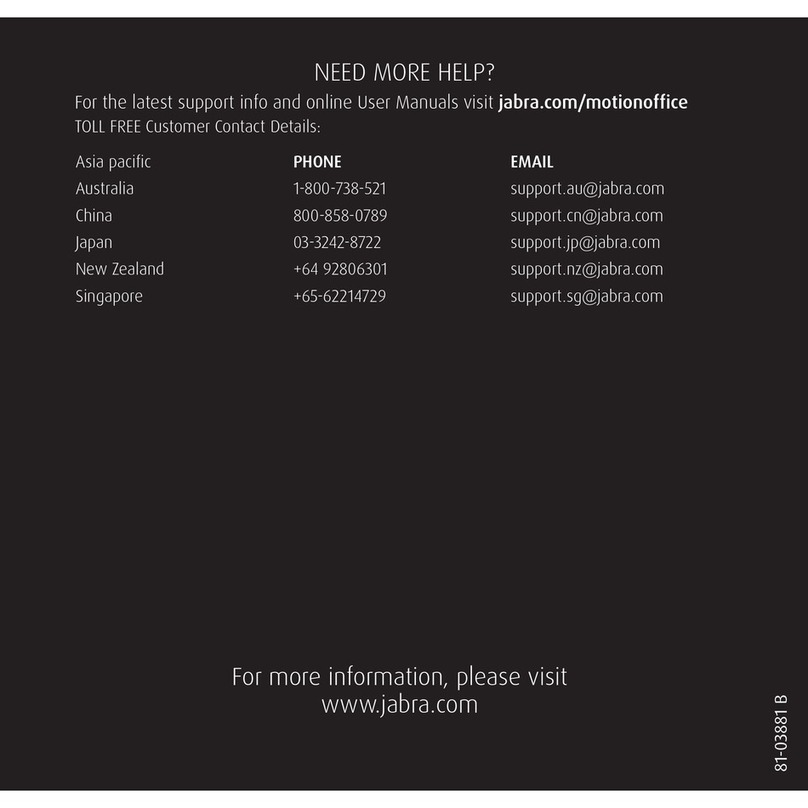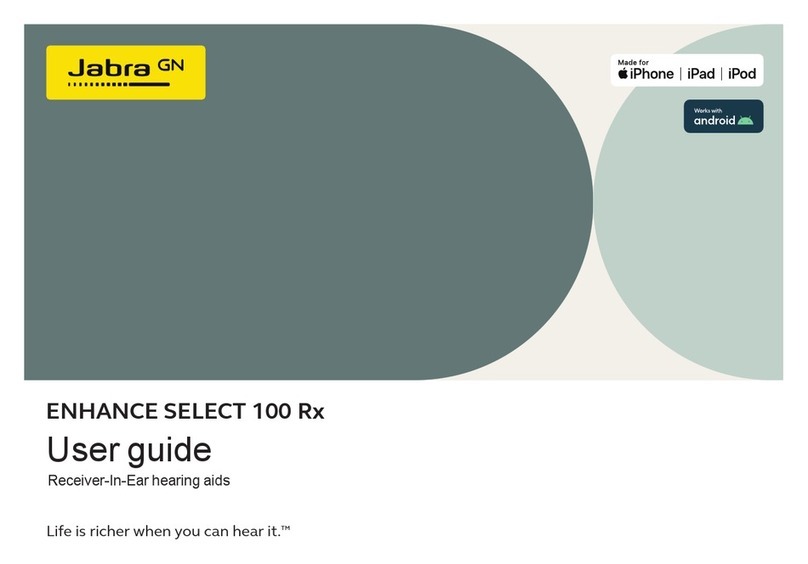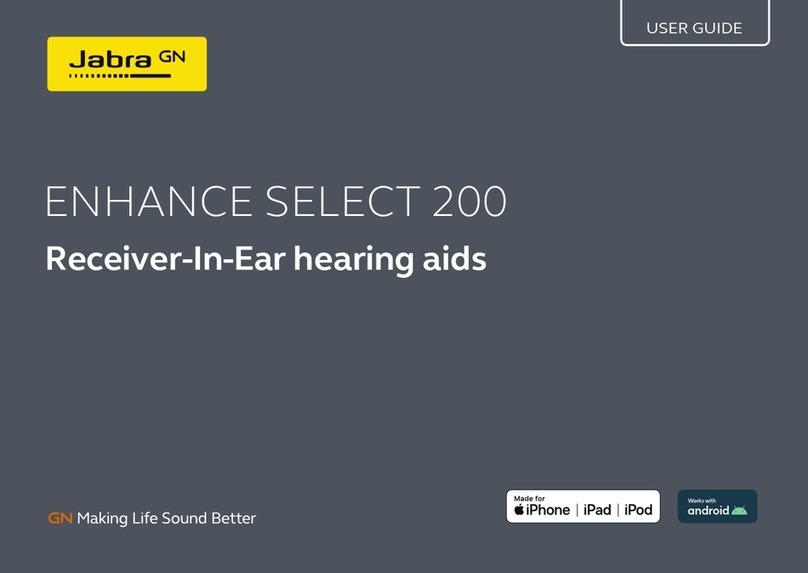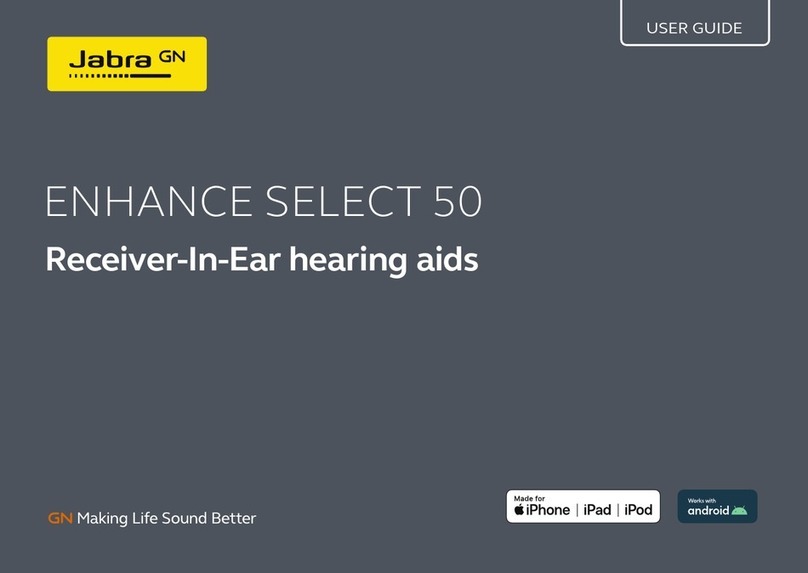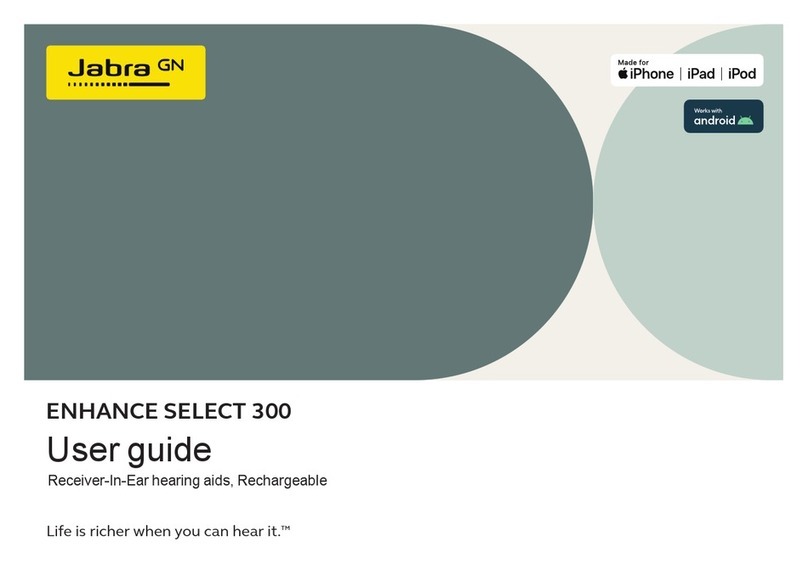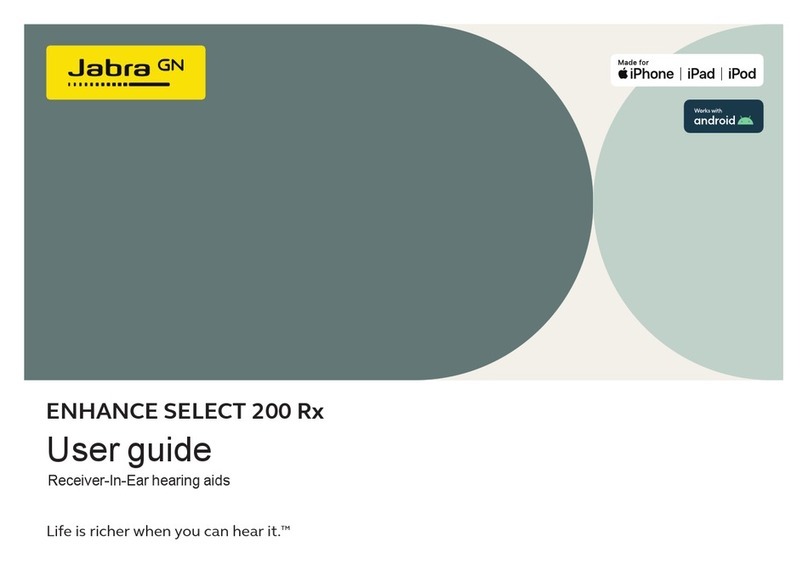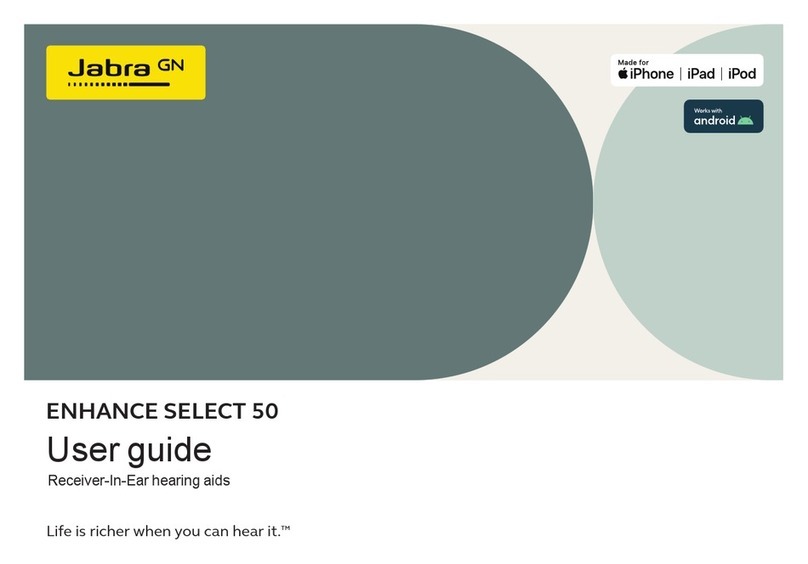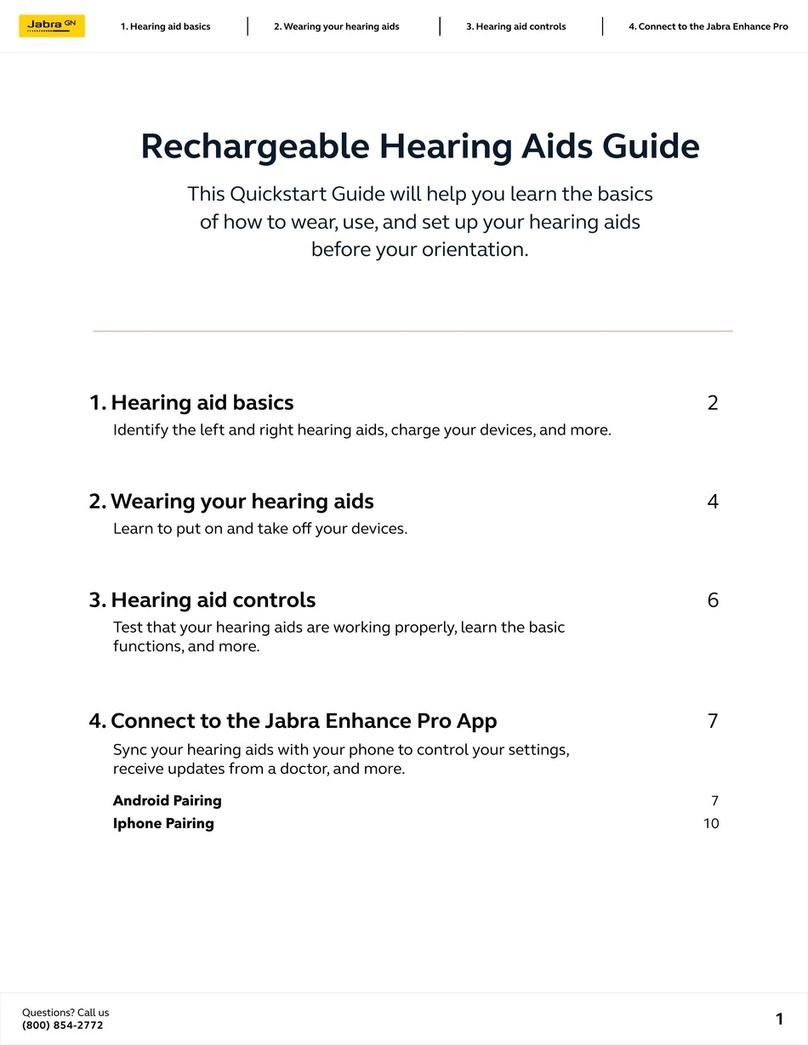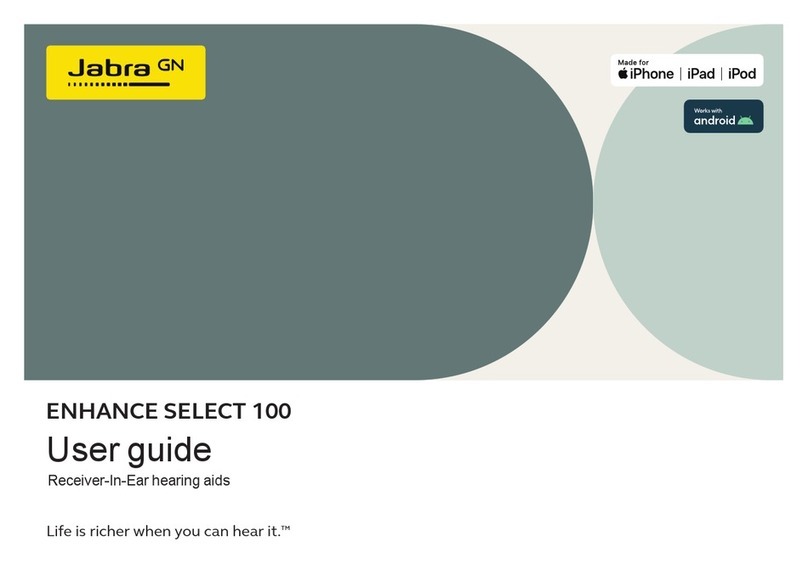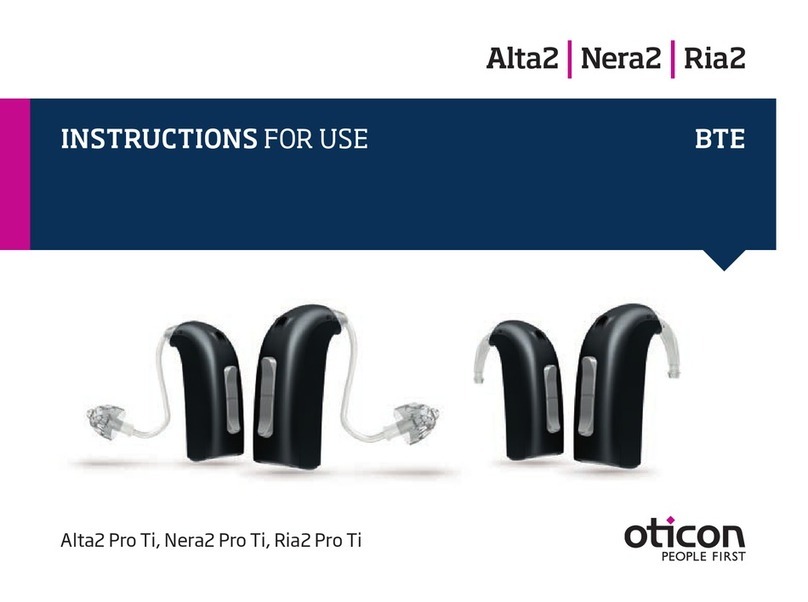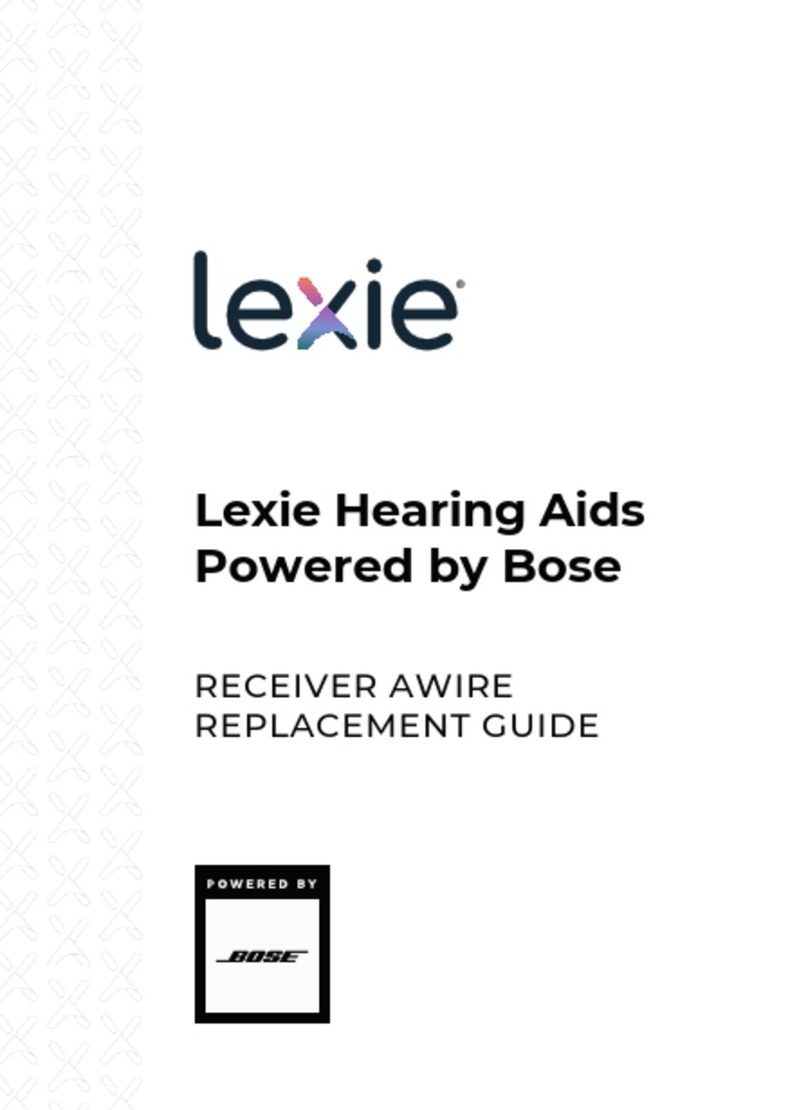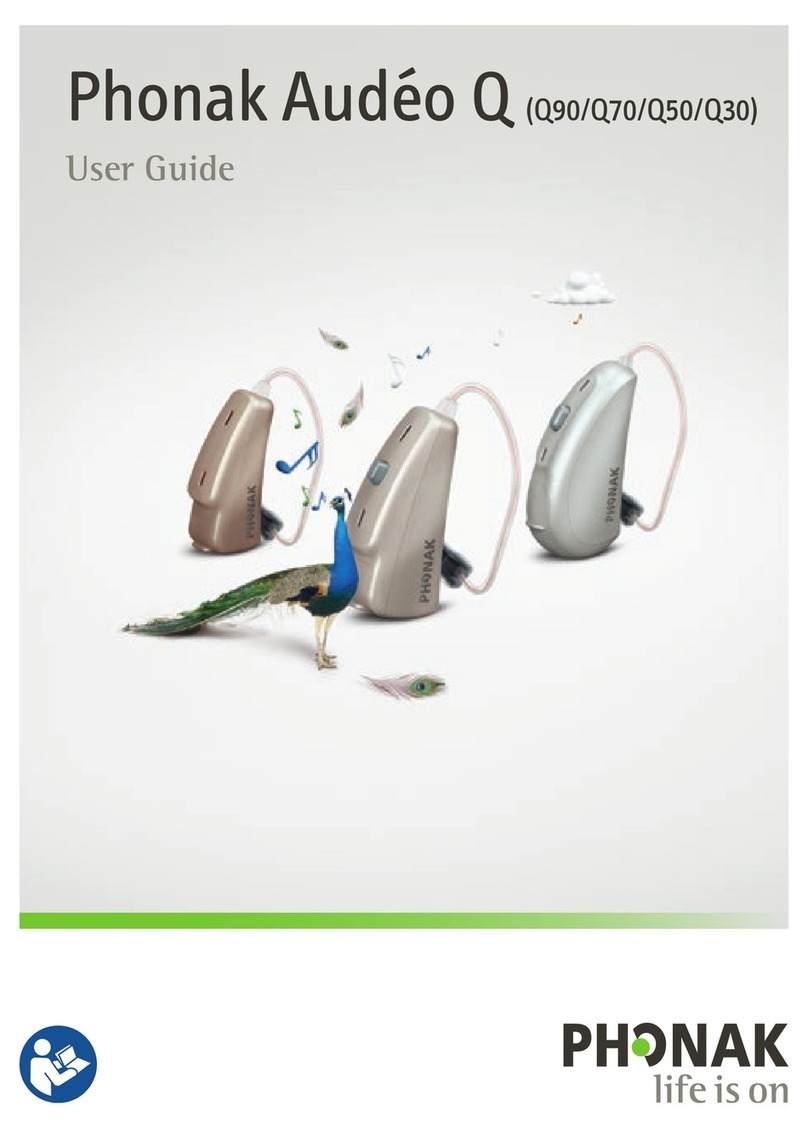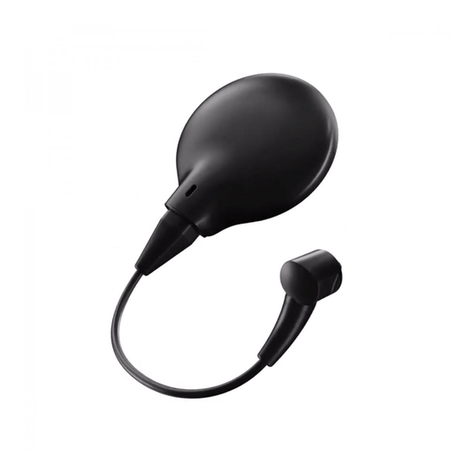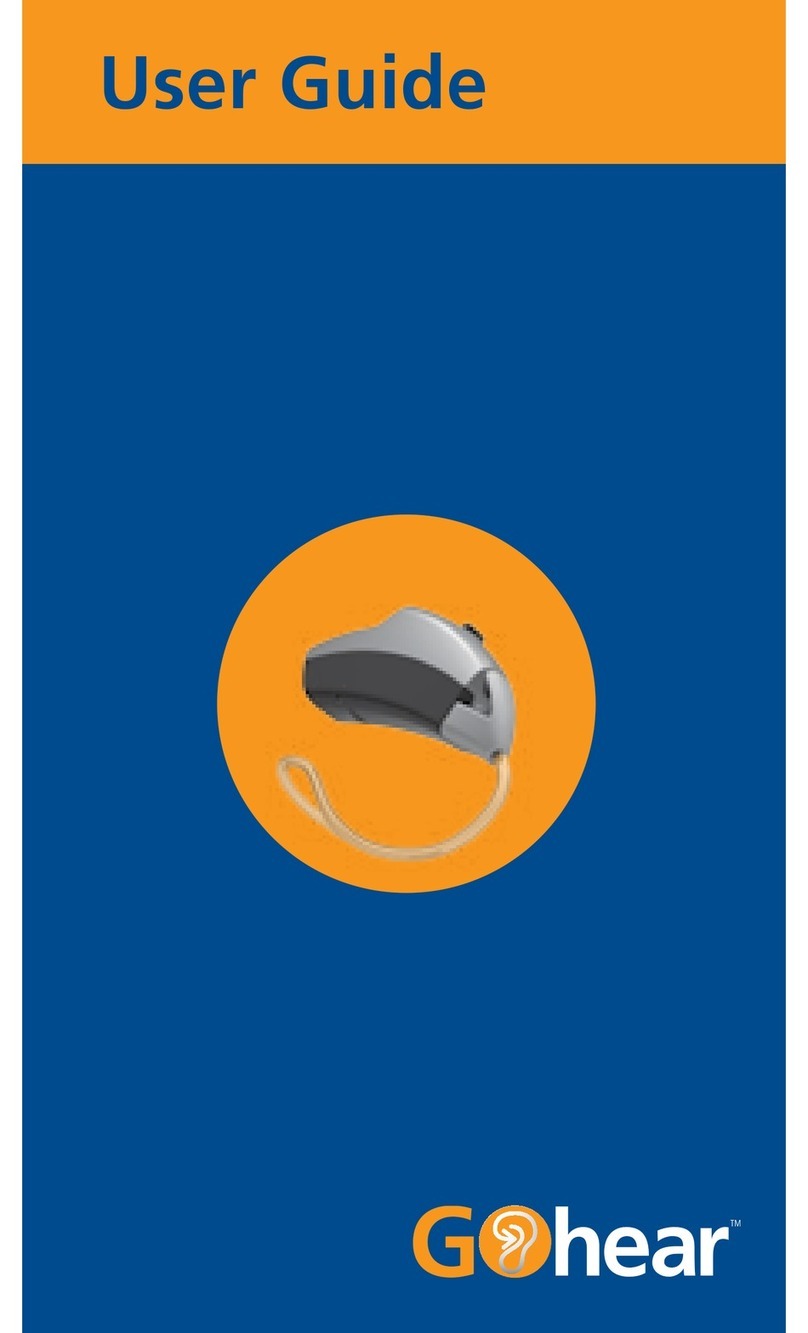
NOTE:
If you remain concerned, consult a professional
•If you try this device and continue to struggle with or remain concerned about your hearing, you
should consult with a hearing healthcare professional.
What you might expect when you start using your hearing aid
•A hearing aid can benefit many people with hearing loss. However, you should know it will not
restore normal hearing, and you may still have some difficulty hearing over noise. Further, a hearing
aid will not prevent or improve a medical condition that causes hearing loss.
•People who start using hearing aids sometimes need a few weeks to get used to them. Similarly,
many people find that training or counseling can help them get more out of their devices.
•If you have hearing loss in both ears, you might get more out of using hearing aids in both, especially
in situations that make you tired from listening – for example, noisy environments.
Tell FDA about injuries, malfunctions, or other adverse events
•To report a problem involving your hearing aid, you should submit information to FDA as soon as
possible after the problem. FDA calls them “adverse events”, and they might include: skin irritation in
your ear, injury from the device (like cuts or scratches, or burns from an overheated battery), pieces
of the device getting stuck in your ear, suddenly worsening hearing loss from using the device, etc.
Instructions for reporting are available at https://www.fda.gov/Safety/MedWatch, or call 1-800-FDA-
1088. You can also download a form to mail to FDA.
4
